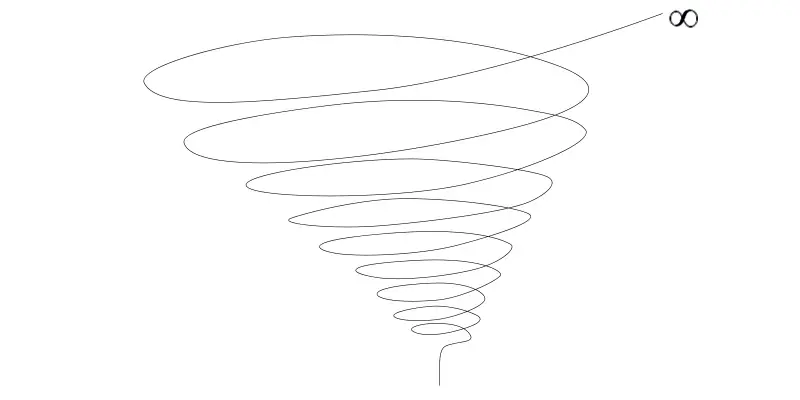“If you’re born today, you’ve limited expressions”- Frank Dance
Frank Dance proposed a communication model inspired by a helix in 1967, known as Helical Model of Communication. A helix is a three dimensional spring like curve in the shape of a cylinder or a cone.
Helix is compared with evolution of communication of a human since birth to existence or existing moment. Helical model gives geometrical testimony of communication. The model is linear as well as circular combined and disagrees the concept of linearity and circularity individually.

Concept of Helical Model of Communication
Helical model of communication introduces the concept of time where continuousness of the communication process and relational interactions are very important. Communication is taken as a dynamic process in helical model of communication and it progresses with age as our experience and vocabulary increases.
At first, helical spring is small at the bottom and grows bigger as the communication progresses. The same effect can be seen with communication of humans, where you know nothing about a person at first and the knowledge grows steadily as you know the person better. It considers all the activities of the person, from the past and present.
Communication is affected by the curve from which it emerges which denotes past behavior and experiences. Slowly, the helix leaves its lower levels of behavior and grows upward in a new way. It always depends on the lowest level to form the message. Thus, the communicative relationship reaches to the next level in which people share more information.
Communication is supposed to be continuous and non-repetitive. It is always growing and accumulative.

Example of Helical Model of Communication
A child crying at birth signifies the communication of the child to its parents that he/she is alive. After some years, the child cries whenever the child needs anything like food or attention. He/she learns words and starts communicating with words.
The child learns specific languages and communicates with the people who know the language that he/she knows. Communication becomes more complex as the child grows into adult and to the existing moment. The adult uses the same pronunciations and use of words or facial expressions that he/she learned when he/she was a child. Communication is directly dependent on his/her past behavior as a child but can also modify as the person grows.
In this example, communication evolves with the child crying. This is where the helix is small at the bottom. And he continues communication, the helix gradually grows. When the communication becomes more complex, the spiral grows wider. From then on, it grows steadily as his life goes on.
Advantages of Helical Model of Communication
- The model assumes sender and receiver to be interchangeable and makes communication process to be two way.
- The model takes the communication process speculative and intellectual.
Disadvantages of Helical Model of Communication
- The model is taken as more simple than it should be.
- Some critics don’t take it to be a model as it has very few variables.
- It is not testable because it is abstract.
- It is not represent in a systematic and orderly way.
- Variables cannot be differentiated in this model.
- Continuity may not always be true for communication. There might be breaks in situations as well as events can be meaningless, forced or unproductive.
- The purpose of communication is not always growth.
[Related Reading: Becker’s Mosaic Model of Communication]
